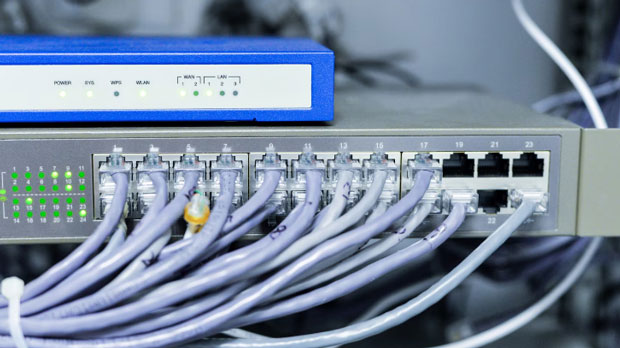How can I save money by purchasing a SOCKS5 proxy package?
In today’s digital landscape, privacy, security, and access control are critical concerns. Whether for personal use or business, many users and organizations are turning to proxies for solutions. Among various types, socks5 proxies stand out as a highly versatile and efficient choice. By purchasing a socks5 proxy package, users can save substantial costs in a variety of ways. This article explores the factors behind these savings, including improved resource efficiency, bypassing geographical restrictions, optimizing network traffic, and reducing security risks. We will delve into the detailed benefits of SOCKS5 proxies and how they can lead to significant cost savings. Understanding SOCKS5 Proxy and Its AdvantagesBefore diving into the cost-saving strategies, it is essential to understand what a SOCKS5 proxy is and how it differs from other types of proxies.A SOCKS5 proxy is a type of internet protocol that facilitates the transmission of data between a client and a server via an intermediary server. It works by sending data packets on behalf of the user, which allows for the masking of the user’s real IP address. SOCKS5 proxies are known for their flexibility, as they can handle various types of internet traffic such as HTTP, FTP, and even gaming or streaming data, which other proxies may struggle with.Unlike its predecessors, SOCKS5 proxies offer superior authentication and support for UDP (User Datagram Protocol), providing faster speeds, enhanced reliability, and better security. This makes them an ideal choice for individuals and businesses looking for a more comprehensive and efficient proxy solution.1. Avoiding Geographical Restrictions and Accessing Global ContentOne of the most significant ways to save money when purchasing SOCKS5 proxy packages is by using them to bypass geographical restrictions and access content or services available at lower prices in different regions. Many services, especially in the fields of streaming, software subscriptions, and online shopping, have different pricing models based on the region.For example, online streaming platforms like Netflix and Amazon Prime may charge higher fees in certain countries compared to others. By using SOCKS5 proxies, users can connect to servers located in regions with cheaper subscriptions or better content access. This can lead to substantial savings over time, especially if you are subscribed to multiple services or make frequent international purchases.Additionally, some online stores offer discounts or special offers based on geographic location. By using a SOCKS5 proxy to appear as if you are browsing from a region with better offers, you can take advantage of these promotions and lower your overall spending.2. Enhancing Security and Reducing Risks of CyberattacksAnother crucial way SOCKS5 proxies save money is by enhancing security and reducing the risk of cyberattacks. Businesses and individuals alike are vulnerable to hacking, data breaches, and other cyber threats that can lead to costly damages, both financially and reputationally. SOCKS5 proxies act as a barrier between your device and potential attackers, making it more difficult for malicious entities to gain access to your network or personal information.By encrypting your data and hiding your real IP address, SOCKS5 proxies can protect you from several online threats, such as DDoS attacks, which could otherwise disrupt operations and result in lost revenue or service downtime. Furthermore, businesses that rely on e-commerce platforms, online transactions, or sensitive client data benefit from the added security, as it helps mitigate fraud, identity theft, and financial losses.For individuals, SOCKS5 proxies are a cost-effective alternative to more expensive security solutions, such as virtual private networks (VPNs) or dedicated firewalls. By offering solid protection at a lower cost, SOCKS5 proxies enable users to safeguard their online presence without breaking the bank.3. Optimizing Network Traffic for Increased EfficiencyPurchasing a SOCKS5 proxy package can lead to significant savings by optimizing network traffic, which results in faster browsing speeds, smoother data transfers, and lower bandwidth costs. When you use a SOCKS5 proxy, your network traffic is routed through a remote server, allowing you to offload some of the data processing tasks to that server. This reduces the load on your local network, improving the overall speed and efficiency of your internet connection.For businesses with large-scale operations, SOCKS5 proxies can be used to optimize web scraping, reduce latency in remote access systems, and enhance load balancing. These benefits can translate into reduced costs for data hosting, storage, and maintenance, while also boosting productivity by allowing employees to access information more quickly and efficiently.Furthermore, for individuals who engage in online gaming or use data-heavy applications, SOCKS5 proxies can improve ping times, reduce lag, and enable faster download speeds. This enhances the user experience, allowing for more enjoyable and seamless online activities without incurring higher costs for premium internet speeds or additional hardware.4. Supporting Multiple Concurrent Connections Without Extra FeesOne of the key advantages of SOCKS5 proxies is their ability to handle multiple concurrent connections without requiring additional fees. This is particularly beneficial for businesses and users who need to manage several devices or accounts simultaneously. For instance, if you are running multiple e-commerce stores, managing social media accounts, or conducting research through web scraping, you can use a single SOCKS5 proxy package to handle all of these tasks without needing to purchase separate proxies for each connection.The flexibility of SOCKS5 proxies allows for cost-efficient management of multiple operations. By purchasing one package that supports multiple concurrent connections, you can reduce the number of subscriptions or services you need, leading to lower overall costs for your business or personal use. This multi-tasking capability is especially useful for users with complex online needs or those running multiple online campaigns, as it consolidates various functions into one streamlined, cost-effective solution.5. Reducing Bandwidth Consumption for BusinessesFor businesses that rely heavily on internet usage, such as those in the tech, marketing, or research sectors, bandwidth costs can add up quickly. A SOCKS5 proxy helps businesses reduce bandwidth consumption by compressing traffic, filtering unnecessary data, and efficiently routing internet activity. This helps to cut down on the volume of data that needs to be transmitted, leading to lower bandwidth charges.Moreover, by caching frequently accessed data, SOCKS5 proxies can improve the response time of web pages and services, reducing the amount of data needed for each connection. This results in less strain on your network infrastructure and a more cost-effective use of available resources.ConclusionPurchasing a SOCKS5 proxy package offers numerous advantages for individuals and businesses alike. From bypassing regional restrictions and enhancing security to optimizing network traffic and managing multiple connections, the cost savings can be substantial. By using SOCKS5 proxies, users can protect themselves from cyber threats, improve browsing performance, and reduce unnecessary expenses on additional security or bandwidth services. When chosen and implemented correctly, SOCKS5 proxies provide an efficient and cost-effective solution for those looking to maximize their internet usage while minimizing costs. Whether you're a casual user seeking to access content more affordably or a business looking to enhance operations without breaking the bank, SOCKS5 proxies offer a practical way to achieve both.
2025-01-10
























































